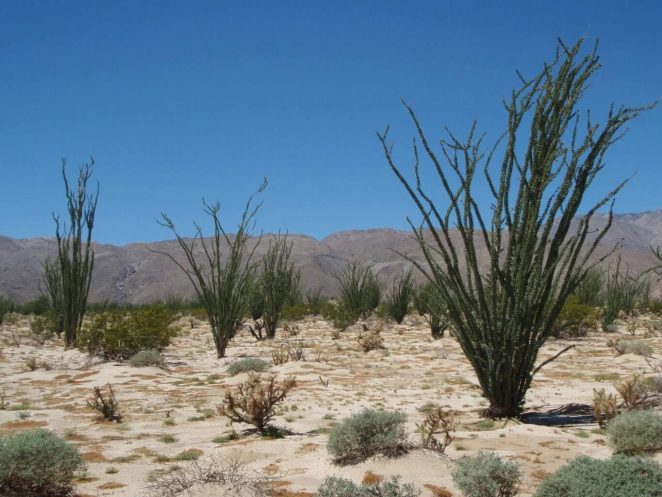Wildflowers of California’s Desert in Bloom: Fields of Poppies, Lilies, and Lupine; A Mass of Springtime Color
The rain that drenched the Anza-Borrego Desert State Park and Joshua Tree National Park in mid-December could produce a better wildflower show than has been seen for a few years. And the snow that carpeted the Mojave Desert and the higher elevations of Joshua Tree was a good thing too. Wildflowers love snow—as long as it’s the right time of year.
So things are looking good for a springtime spectacle, as long as the weather cooperates. In order to get one of those phenomenal blooms, a little more rain is still needed. And as long as the frost doesn’t get too heavy or a freak snowstorm doesn’t blow through, the California Deserts will be a popular destination this spring.
Anza-Borrego Desert
With five-hundred miles of dirt roads and hundreds of miles of hiking and biking trails, Anza-Borrego Desert State Park is the largest state park in California.
Look for road-runners and kit foxes running from shrub to shrub. Watch golden eagles soaring above, and watchout for the red-diamond rattlesnakes hiding in the shade. Whoever said the desert is a lonely, barren place?
Because Anza-Borrego is so far south the wildflowers start appearing by January. Desert Lilies are already sprouting up. Look for Desert Apricot and Indian Paintbrush in the higher elevations, and enjoy the fragrant Evening Primrose and Verbena in the valleys.
The Anza-Borrego Desert Natural History Association (ABDNHA) has a calendar full of hikes, tours, lectures, and classes.

Joshua Tree National Park
The land here has been shaped and sculpted by strong winds, torrents of rain, and extreme climate. The wildflower season usually kicks off in late February, when the Joshua trees have showy cream-colored blooms. Because of the extreme diversity of this park, the wildflower season is a long one, extending into May, when the cacti display their bright, waxy flowers. In the regions that reach 5,000 feet, the blooms are still arriving in June.
Joshua Tree National Park is famous for the birds and a great place for bird watching. With over 250 different kinds of birds, there’s plenty to see. Pick up a bird checklist at the visitor center.
The Desert Institute at Joshua Tree National Park offers community lectures and field classes. They have a popular spring special program called Wildflower Wanderings. Your senses will be saturated with the beauty of wildflowers as you learn how to identify the blooms within the park.

})(jQuery);


